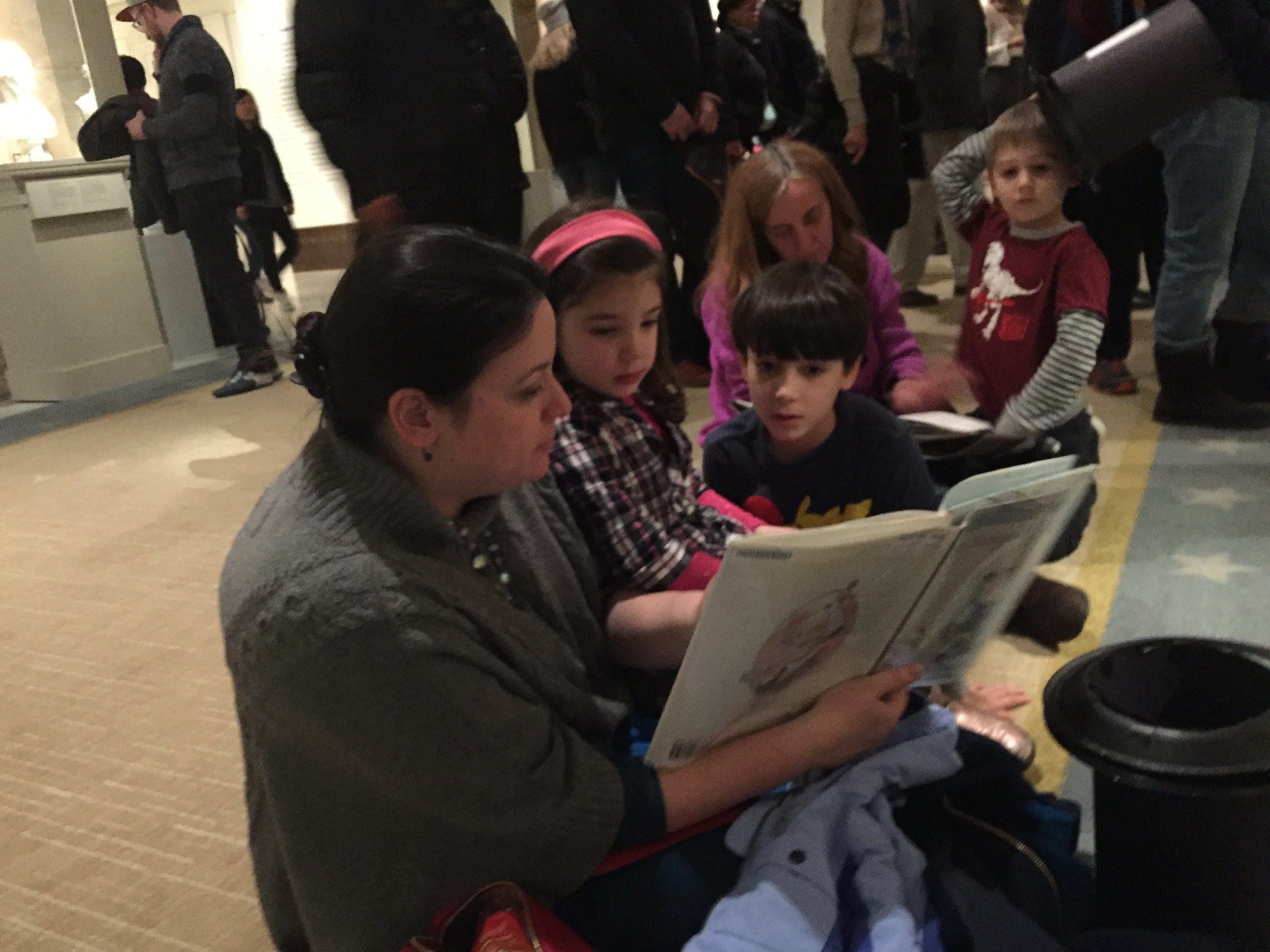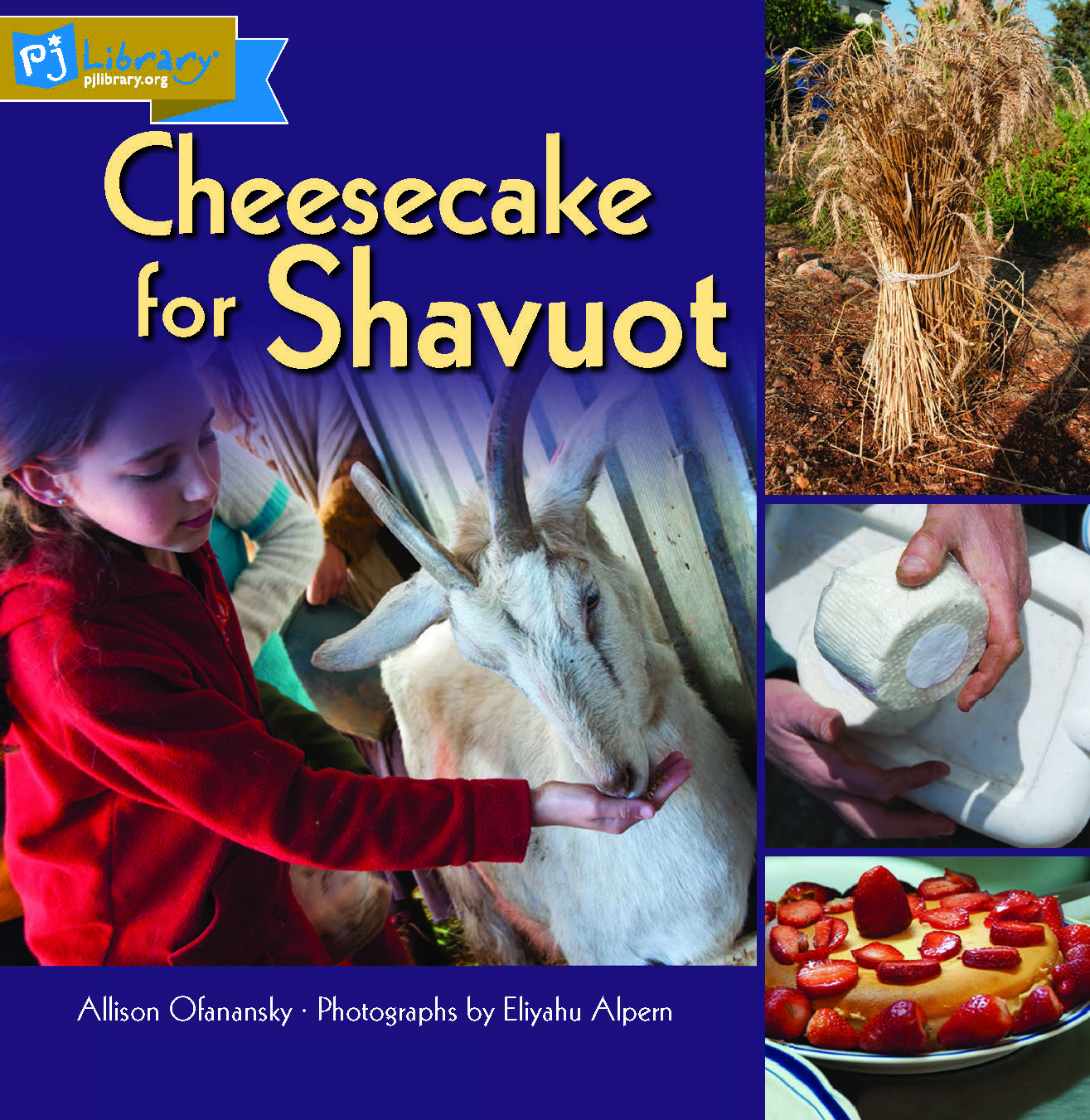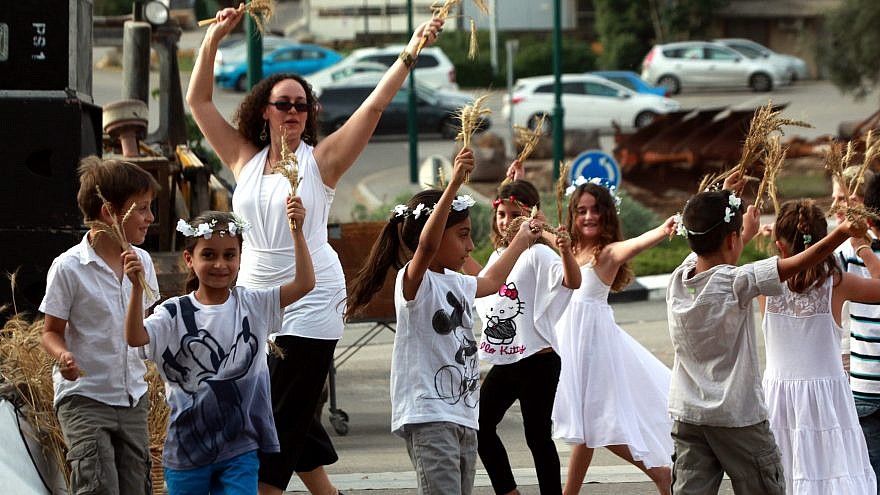It’s one of the most dramatic scenes in the Torah, as amazing as the splitting of the sea.
Imagine the Master of the Universe coming down to Earth in an astounding fireworks display of thunder, lightning and smoke (see Exodus 19 for the exciting details), singling out a ragtag bunch of escaped slaves to receive nothing less than the master plan of the universe: the Torah.
But whereas most Jews know how the sea split and the Israelites crossed over on dry land from years of reading the Passover Haggadah, far fewer realize that the holiday of Shavuot, 50 days later, marks the equally miraculous giving of the Torah on Mount Sinai.
But to make sure that the next generation doesn’t miss out, Shavuot activities, child-friendly celebrations and books bring to life this 3,300-year-old miracle for you to share with your kids and grandkids.
For Sarah Rabin Spira of Washington, D.C., when Shavuot rolls around (this year, it’s Saturday night, June 8, lasting two days, through Monday, June 10, and one day in Israel), she pulls pillows and blankets into the center of the living room and spreads out a feast of books for a late-night readathon with her 6- and 8- year-olds, often inviting over friends for a pot-luck dinner and plenty of ice-cream as well.
“Several years ago, we hit on the formula of gathering up all their favorite books, especially the Jewish ones—everything they could possibly read in one night—and letting them stay up late,” says Spira, who runs the PJ Library (a program of the Harold Grinspoon Foundation, a North American Jewish nonprofit organization based in West Springfield, Mass.), and family education and engagement for the Jewish Federation of Greater Washington. “As parents, we can get behind any holiday where you are encouraged to stay up late, eat dairy and read books. It makes for a special time.”

‘Laws are a great Jewish innovation’
Shavuot, the “Festival of Weeks”—sometimes called Chag HaKatzir (“Harvest Festival”), Yom Habikurim (“Day of the First Fruits”) or Zeman Matan Torah (“The Time of the Giving of the Torah”)—was originally an agricultural holiday marking the first of the harvest. But it’s long been recognized as the day the Israelites stood at the foot of Sinai and heard the Voice of G-d declaring the Ten Commandments (at least the first two, until we got good and scared and begged Moses to take over for the remining eight).
Today, Jews around the globe celebrate the momentous experience of revelation in the desert by staying up late (or for the stalwart, all night) learning Torah, and indulging in such dairy delights as cheesecake and blintzes.
In Israel, the traditions include harvest-welcoming festivals and feasting on native fruits, as well as parades, dances, skits and girls with wreaths of wildflowers in their hair. And each year, tradition has it that a farmer will officially present a basket of fruit and vegetable samples to the president.
“It’s absolutely my favorite holiday,” says Meredith Lewis, director of content, education and family experience for PJ Library. For one, Shavuot offers parents the chance to explore some deep Jewish concepts with their kids, she says. “What does the idea of bikkurim, first fruits, mean to us in our lives? How does the wisdom and loyalty of Ruth [the book of Ruth is traditionally read on the holiday] speak to us today?”
The holiday also represents transitions, she adds, “from school to summer, from being a little kid to a big kid who can stay up and learn with the grownups, and have ideas about what the Ten Commandments mean to them.”
When it comes to Shavuot and Torah in general, “I’m a big fan of interactive Torah,” says Rabbi David Fohrman, founder of Aleph Beta, a program of animated videos around Torah and Jewish holidays that he describes as “Netflix for Torah.”
For Shavuot, the rabbi is hoping that the videos “inspire conversation around the table, which often take a turn you’d never expected.” One of them, “The Hidden Structure of the Ten Commandments,” for instance, challenges the viewer to explore how the first five commandments differ from the last five and what they come to teach us today. (For instance, not coveting might mean to us not being jealous of someone with a nicer house or more prestigious job.)
And Shavuot also gives us an easy entrance “into a discussion of why it’s wonderful to have laws, what our world would be like if there were no laws and how they bring us closer to G-d, and what we’re supposed to do as Jews in this world to serve G-d and not some human master. Turns out these laws are a great Jewish innovation.”
A few Shavuot How-To’s for Kids
Prepare for some Shavuot Fun. Some excellent activities can be found online. For starters, take a look at PJ Library (https://pjlibrary.org/shavuot), Chabad.org (https://www.chabad.org/kids/article_cdo/aid/354751/jewish/Shavuot.htm) and My Jewish Learning (https://www.myjewishlearning.com/article/shavuot-activities-for-kids/) for a full menu of videos, crafts, recipes and stories designed to bring Shavuot to life for the youngest celebrants.
Stay up late. For centuries, Jews have learned late into the night in synagogues, homes or community centers for Tikkun Leil Shavuot, the “Repair of Shavuot Night.” It’s said that our forebearers overslept the morning they were scheduled to receive the Torah so we’re making it for it now. Another explanation: Digging into the Torah in search of meaning is the best way to honor the gift of it.
Act It Out: Try writing an original skit with the kids (or organizing some improv) around a bunch of Israelites waiting for the Torah, and how it may have felt to suddenly hear the voice of G-d amid the thunder and lightning.
Stand Up for Torah. Why not go to synagogue the first morning (Sunday)? Don’t be surprised that everyone stands when the Ten Commandments are read, just at Mount Sinai. An extra treat: Chabad Houses and other synagogues serve ice-cream at kiddush!
Camp Out. If it was good enough for our ancestors in the wilderness, why not re-enact the adventure with your own campout, weather-permitting? Or just pitch a tent indoors or build one with chairs and blankets. Invite friends for a sleepover and stay up telling stories, starting with the escape from Egypt and then being given the Ten Commandments.
The 11th Commandment: Thou shalt eat cheesecake and ice-cream (unless you’re lactose-intolerant, of course). There are many possible reasons that Shavuot is the only Jewish holiday with a dairy menu, not the least of which is the Torah calls Israel “the land of milk and honey” and the gematria (numerical value) of the word chalav (“milk”) is 40, which is how many days Moses spent on Mount Sinai getting the Torah.

Celebrate the People of the Book. There are quite a few inspiring books to choose from, especially for the younger set. Some of the most beloved by Lewis, Spira and Michal Malen, children and young adult editor for the Jewish Book Council, include Sadie and the Big Mountain (Kar-Ben) by Jamie Korngold and Julie Fortenberry about a little girl working up the courage to go on her preschool’s Shavuot hike; Sammy Spider’s First Shavuot by Sylvia Rouss (Kar-Ben), featuring the beloved spider; The Art Lesson by Allison and Wayne Marks (Kar-Ben) which tells of a child who, together with her grandmother, creates traditional Shavuot papercuts; Cheesecake for Shavuot by Allison Ofanansky (Kar-Ben) that brings to young readers how little Israelis make cheesecake from scratch with local everything and A Mountain of Blintzes by Barbara Diamond Goldin (HMH Books for Young Readers), which tells of a family in the 1920s pulling together to find all the ingredients for their Shavuot blintzes (and even has a yummy recipe inside to make your own blintzes at home).
And The Littlest Mountain by Barb Rosenstock and Melanie Hall is a Shavuot classic, a powerful lesson in humility, asking which mountain will be chosen for the scene of revelation. It’s also fun to act out with each child offer up a voice to each different mountain, says Spira.
“Whether you act them out or not, just reading these books together—a joyful, meaningful Judaism that grows—then you own these stories, all within the pleasure of shared snuggling and then talking it over.”
Or, as PJ Library’s Lewis puts it: “Even if children don’t get all the complexities, just by feeling the specialness of staying up late, and imagining what it must have been like to stand at that mountain and hear the Ten Commandments all together—that and a piece of cheesecake, and altogether they’ll get a sweet taste of what it means, a new family tradition they won’t forget.”
To watch the Aleph Beta video (You can use this 30-day free subscriber code: JNSFREE), visit https://www.alephbeta.org/playlist/hidden-structure-of-ten-commandments.
Shavuot Quiz for Kids
How much do your kids (or even you?) know about this under-recognized Jewish holiday?
Questions:
- What are we celebrating on Shavuot?
- Why do some grown-ups stay up all night learning Torah, and why do some kids get to stay up late too?
- Why is the holiday called Shavuot?
- What is the special treat many Jewish people eat on Shavuot?
- After you and your family (and maybe some friends) read all 10 Commandments out loud, share your favorite and why.
Answers:
- Both the receiving of the Torah and the first fruits of the harvest.
- Both to make up for oversleeping when we got the Torah and because we honor the Torah by learning about it.
- That means “weeks” in Hebrew, reminding us that Shavuot is seven weeks after Passover.
- It’s customary to enjoy many treats made out of milk products, including (and especially) cheesecake, blintzes and ice-cream.
- You tell us your answers!


























